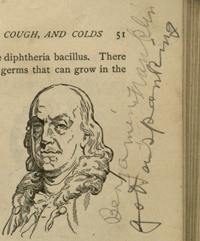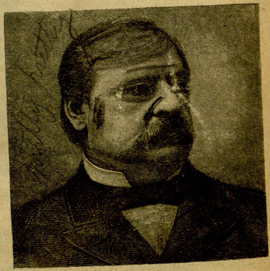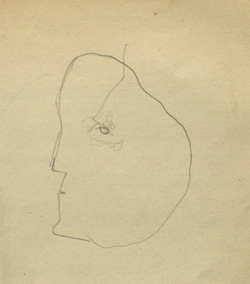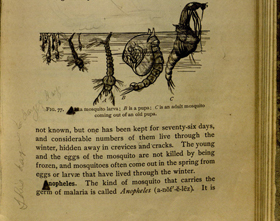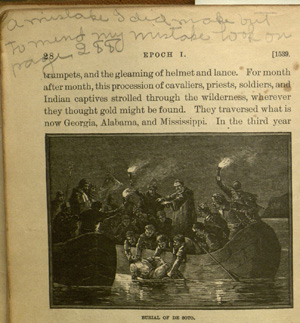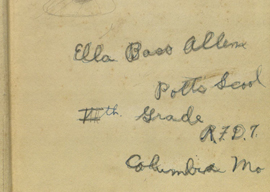The week before spring break is traditionally a difficult time for students to remain focused on their books. Our collection of historic textbooks offers evidence that this trend is not new. Wide margins have always provided opportunities to practice one's signature. The bald pates of historic personages have always asked to be filled in with comb-overs.
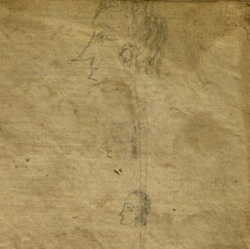 Historic textbooks are an excellent resource, not only for those investigating the history of pedagogy, but also for those interested in getting a picture of the values and ideologies of any given historical moment. Ours is a diverse collection, comprising volumes from 1770 to 1929 and representing such core subjects as Arithmetic, and "Rhetorick," as well as less conventional subjects. American Handy Book of the Brewing, Malting, and Auxiliary Trades sits next to a handwriting manual. Some textbooks defy disciplinary boundaries altogether. The title page of Thomas Wise's The Newest Young Man's Companion of 1770 (right) announces that it includes "a compendious English grammar, letters on compliment, arithmetic and bookkeeping, a compendium of geography, the management of horses, and the art of painting in oil and water colours."
Historic textbooks are an excellent resource, not only for those investigating the history of pedagogy, but also for those interested in getting a picture of the values and ideologies of any given historical moment. Ours is a diverse collection, comprising volumes from 1770 to 1929 and representing such core subjects as Arithmetic, and "Rhetorick," as well as less conventional subjects. American Handy Book of the Brewing, Malting, and Auxiliary Trades sits next to a handwriting manual. Some textbooks defy disciplinary boundaries altogether. The title page of Thomas Wise's The Newest Young Man's Companion of 1770 (right) announces that it includes "a compendious English grammar, letters on compliment, arithmetic and bookkeeping, a compendium of geography, the management of horses, and the art of painting in oil and water colours."
Though in many respects historic textbooks differ from their modern counterparts, in one respect they are the same. They all bear witness to their owners' distraction. Paste downs can be filled in with faces. Margins provide space for recording personal notes that will perplex later generations, such as "This is a day of days," (below) scrawled next to the life cycle of the mosquito.
In between reading about the Monroe Doctrine and the history of the American flag, a student using an 1885 edition of A Brief History of the United States found time to compose the following message to the reader: "Before you find out what I have got to say, page 28 you'll have to see." On page 28, the student continues, "It grieves me to think of the trouble you have taken but look on page 4." There follow a total of seven directions until the final injunction concludes, "You fool don't you know better than to chase this book from cover to cover?"
One wonders if amidst so many pages of instructions, students liked to issue some of their own. Ella Allen was a seventh grader at Potts School in 1920. She provides the following instructions on the pastedown of Primer of Sanitation, Being a Simple Textbook on Disease Germs and How to Fight Them. "If this book should go to Rome, Just give it a kick and send it home." Her book did not make it to Rome–Potts School was in Columbia, Missouri. But maybe Ella made it to Italy one spring. One would hope she had paid enough attention to her primer to avoid the Roman fever that did away with so many of her headstrong, fictional contemporaries.
